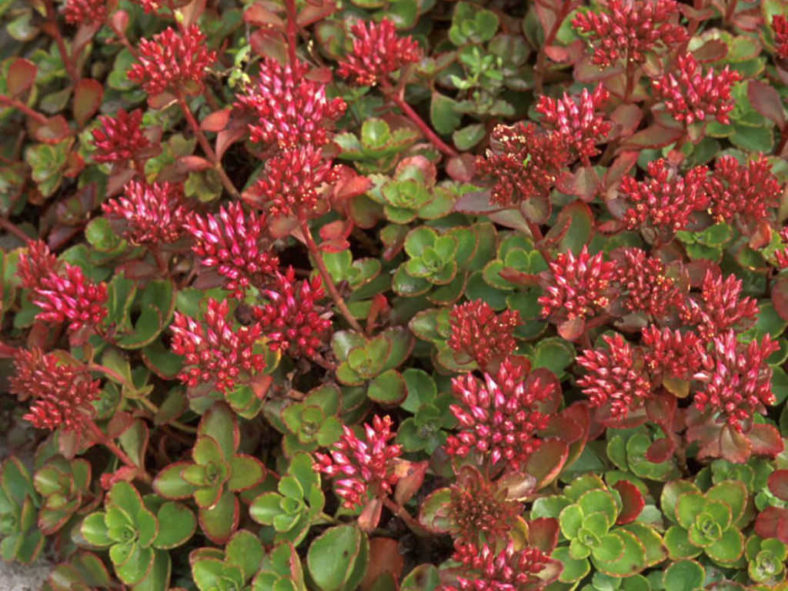Phedimus is a genus of succulent plants in the family Crassulaceae, established in 2004. The first description was made in 1817 by Constantine Samuel Rafinesque. The type species of the genus is Phedimus stellatus.
The species are widespread in Europe and Asia. Most of them will be more familiar as species of Sedum, characterized by having flat, fleshy leaves with serrated or crenate margins. They are perennial or, more rarely, annual plants and many make excellent rockery or ground cover plants. Several species originating in well-watered parts of eastern Asia, with robust growth habits, have been transferred from Sedum into the genus Phedimus.
The generic name "Phedimus" derives either from the Greek word "phaidimos," meaning "shining," and perhaps refers to the leaves of some species, or relates to Phedimus, the Archbishop of Amasea and Metropolitan of Pontus.
Growing Conditions for Phedimus
Phedimus will thrive in conditions many other plants thrive in but will do just as well in less hospitable areas. These succulents have a slow to moderate growth rate, making them popular for growing as a groundcover. They also grow well in containers.

Light
These light-loving plants will tolerate partial shade but prefer full sun and grow best in warmer environments. Plant Phedimus in an area of your garden that gets at least 6 hours of sunlight daily.
Soil
Phedimus thrive in any well-drained soil. Good drainage is critical for preventing root rot or fungal diseases.
Temperature
These succulents tolerate frost and can stay outdoors when the temperature drops below freezing. They are cold hardy down to USDA hardiness zone 3a, -40 °F (-40 °C).
General Care for Phedimus
Phedimus are easy to care for but require a little grooming now and then to keep them from growing too wildly.
Watering
The best way to water your Phedimus is to use the "soak and dry" method. Get the soil completely wet, and then wait until the soil is dry before watering again. Phedimus are drought-tolerant, so they bear well if you neglect them for a while.
Fertilizing
Feed with low-balanced fertilizer to keep your plants happy and healthy. Use a diluted dose of half the strength recommended on the package.
Overwatering and overfertilizing can hurt the Phedimus far worse than not watering or fertilizing.
Repotting
Repot your plants when they outgrow their current pot by moving them to a larger container to hold the plant better. Spring is the best time to repot Phedimus. Make sure the soil is dry before you begin the repotting process.
How to Propagate Phedimus
Phedimus can be grown from seeds, division, or stem cuttings.
Seeds
Sow seeds in spring in well-drained soil in a sunny position. Do not allow the soil to dry out. Prick the seedlings into individual pots when they are large enough to handle.
Division
Dividing your Phedimus plants is the best propagating method because it is easy and usually very successful. Divide in spring when new green shoots are seen. Replant the divisions as soon as possible so they do not dry out.
Divide your Phedimus every 3 to 4 years to control the size and maintain health.
Stem Cuttings
Phedimus is also easily propagated from cuttings. Take a cutting from a healthy plant and remove the lower leaves. Allow cuttings to dry out before they can be planted in well-drained soil.
Pests and Diseases of Phedimus
Phedimus plants generally have few serious pests and disease problems that affect their health.
Pests
Look for slugs, scales, mealybugs, nematodes, aphids, and weevils.
Diseases
Its roots, stems, and leaves are susceptible to rot, rust, and mold diseases in wet environments.
Toxicity of Phedimus
Phedimus plants can be mildly toxic to humans and animals.
Links
- Back to genus Phedimus
- Succupedia: Browse succulents by Scientific Name, Common Name, Genus, Family, USDA Hardiness Zone, Origin, or cacti by Genus